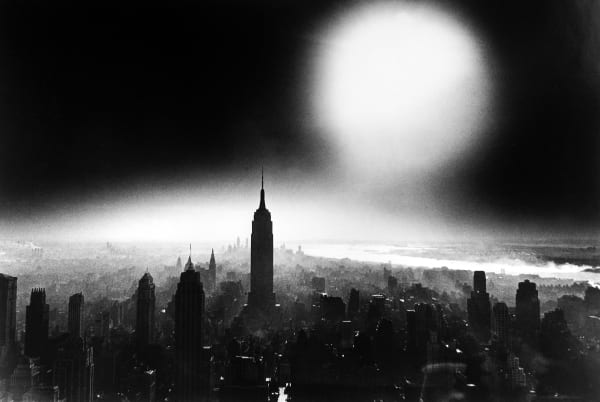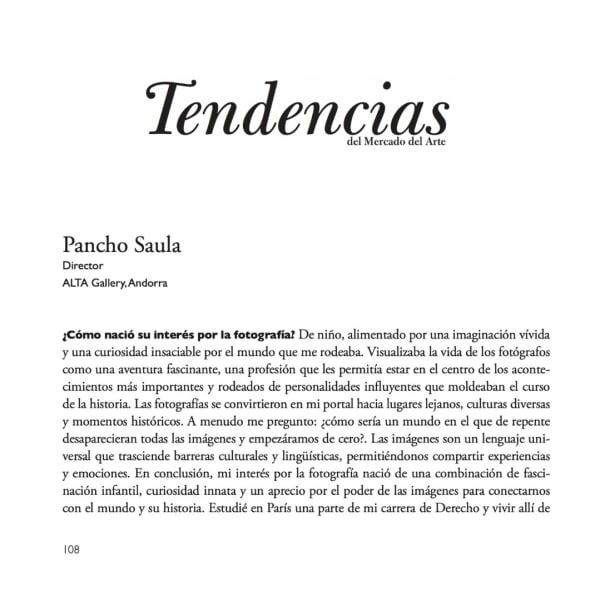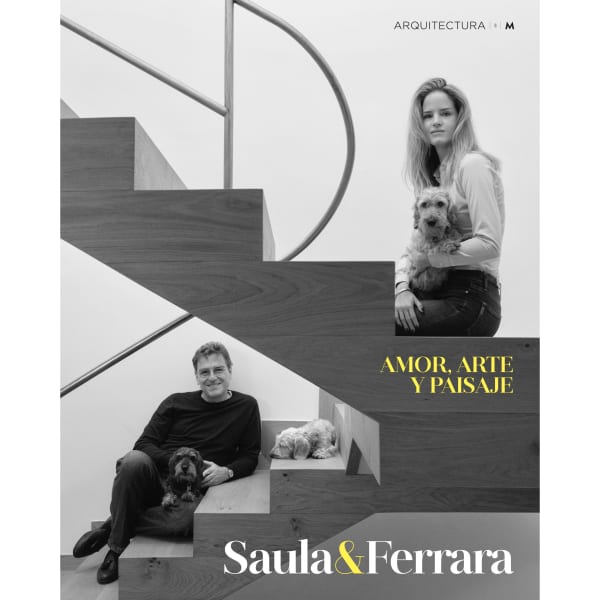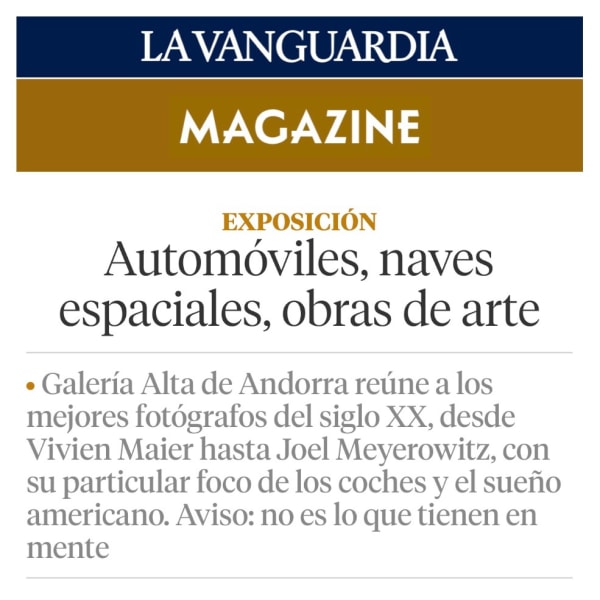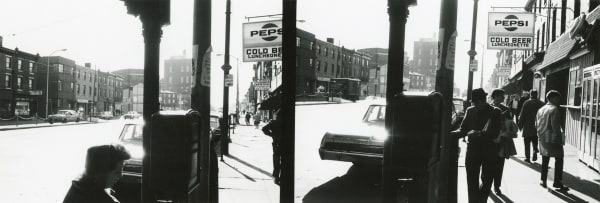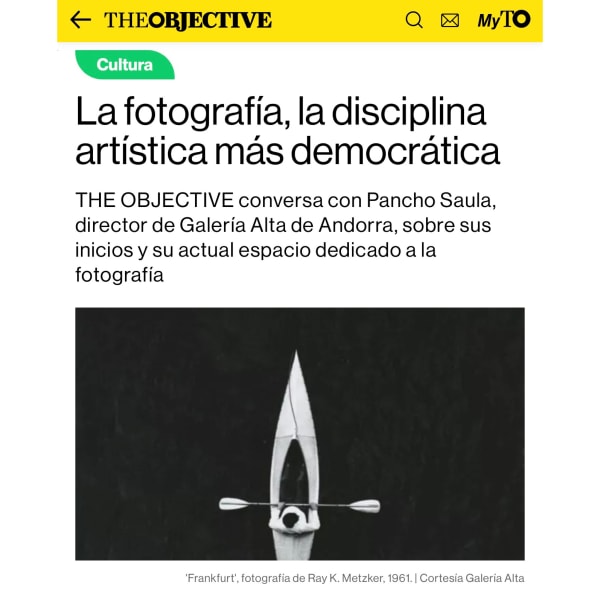William Klein American, 19/4/1928-10/9/2022
-
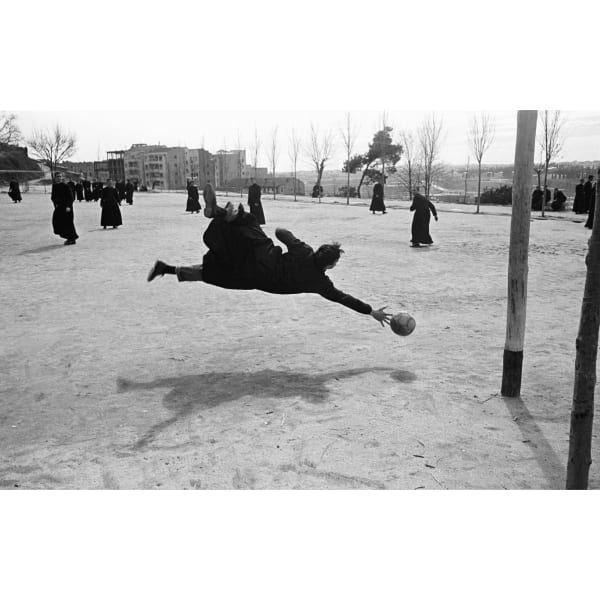
Alta in Barcelona
Spring 2024 9 - 12 April 2024On view will be a selection of works by Berenice Abbott, William Klein, Jessica Lange, Saul Leiter, Ramón Masats, Robert Mapplethorpe, Vivian Maier, Steven Meisel,...Read more -
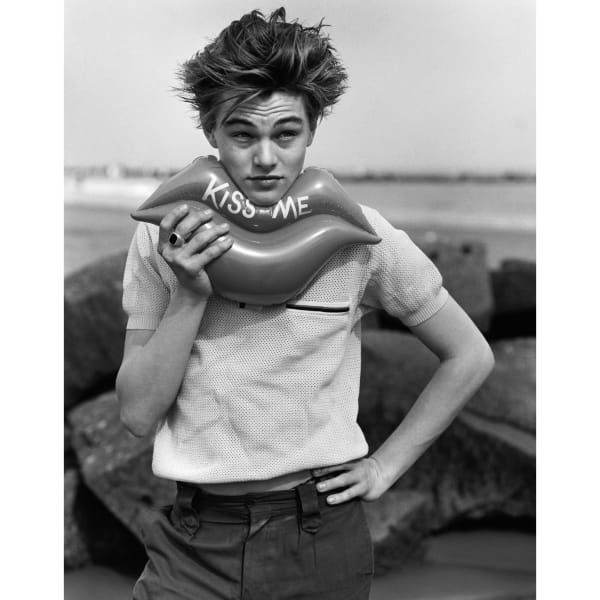
Alta in Paris
Winter 2022 10 - 12 November 2022It is Alta’s 1st anniversary and we would like to invite you to celebrate with us in Paris : November 10, 11 and 12, 2022....Read more
-

Coleccionar Arte Contemporáneo - Fotografía
Vanessa García-Osuna, Tendencias del Arte, 1 March 2025 -

Saula & Ferrara
Writer: Felip Vivanco. Photographer : Txema Yeste, La Vanguardia Magazine, 17 November 2024 -

Automóviles, naves espaciales, obras de arte
Felip Vivanco, La Vanguardia, 5 September 2023 -

Arts & Cars
Felip Vivanco, La Vanguardia, 3 September 2023 -

Metzker: el mestre que faltava / Metzker: The missing master
Andrés Luengo, Bondia, 2 May 2023 -

La fotografía, la disciplina artística más democrática
Fátima Poppe, The Objective, 11 March 2023
William Klein (b.1928) was born in New York City. After graduating early from high school, he began studying sociology at the City College of New York. In 1946 he joined the U.S. Army and was stationed in Germany, where he won his first camera in a poker game. After relocating to Paris in 1948, he continued his studies at the Sorbonne with the assistance of the G.I. Bill. At the time, his focus was abstract painting and sculpture. After studying with the French artist Fernand Léger, Klein's early career breaks came from two exhibitions in Milan, where he was discovered by the architect Angelo Mangiarotti. They began to collaborate when Mangiarotti asked Klein to recreate once of his abstract paintings on the rotating room dividers of a Milanese apartment-his first commissioned work. It was the experience of documenting these panels in motion that lead him to reconsider photography.
In 1954, Alexander Liberman-then the art director of American Vogue-asked to meet with Klein after seeing his kinetic sculptures in the Paris group show, Le Salon des Réalitiés Nouvelles. Subsequently, Vogue published his photographs of Dutch barns, reminiscent of Mondrian, soon after their meeting. Thus began his foray into fashion photography, as well as his well-known photographic essays on various cities. Shooting for Vogue during a brief return to New York , Klein let loose on the city, taking fashion photography in a whole new direction. He captured the beautiful and the grotesque all within wide-angle and telephoto shots. Taking models out of the studio and onto the streets, his revolutionary techniques pioneered a new vision.
Widely acknowledged as a significant innovator in the history and design of the photo book, Klein published his first book Life is Good and Good For You in New York in 1956, which won the Prix Nadar the following year. Capturing the rough and tumble of daily life, Klein's brutally honest images caused a major sensation. Three more books were published, each with photography from a different city, Rome in 1958-59, followed in 1964 by Moscow and Tokyo (reissued in limited edition in 2014 by Akio Nagasawa Publishing).
In 1958, Klein began to explore the moving image, creating his first Pop film, Broadway by Light, in 1958. He went on to produce feature films and documentaries including a satire about the fashion world, Qui-Êtes Vous Polly Maggoo? (1966); Far From Vietnam (1967); Muhammad Ali, The Greatest (1969); and The Little Richard Story (1980). His last film to date, Messiah (1999), reveals on an epic scale a summary of the themes present throughout his artistic career.
The recipient of numerous awards, Klein was honored with a Commander of Arts and Letters in France in 1989, the Medal of the Century by the Royal Photographic Society in London in 1999, the International Center of Photography Infinity Award for Lifetime Achievement in 2007, and the Outstanding Contribution to Photography Award at the 2012 Sony World Photography Awards. Works by William Klein are included the collections of many institutions, including The Metropolitan Museum of Art, The Museum of Modern Art, and the Whitney Museum of American Art in New York; the J. Paul Getty Museum in Los Angeles; and the Centre Pompidou in Paris.

